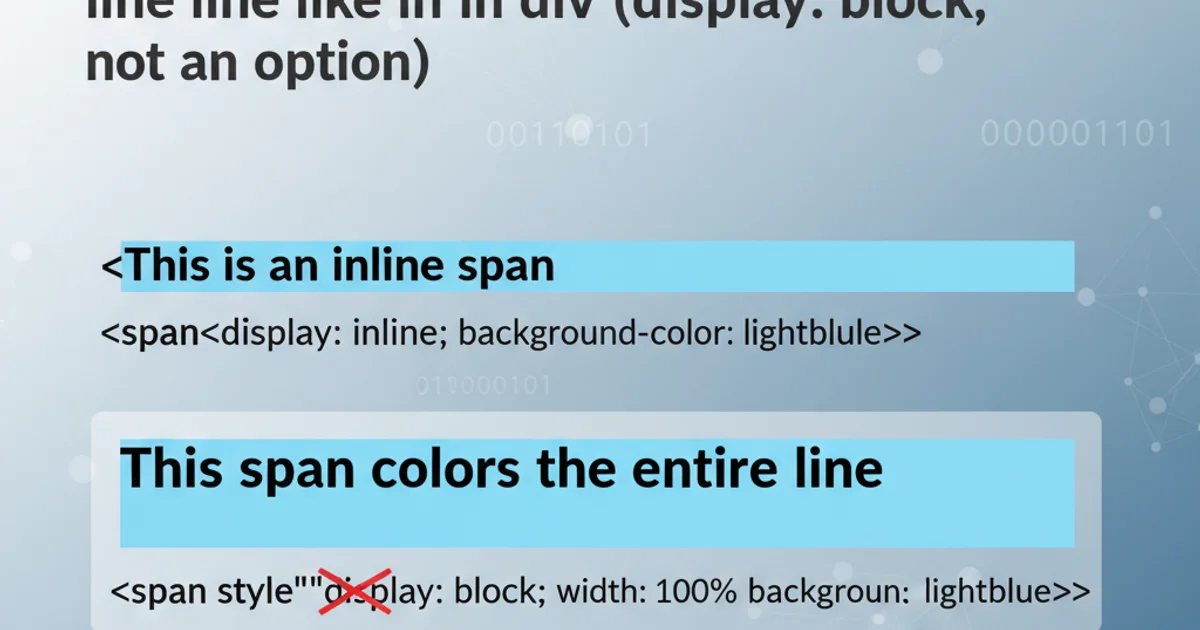How can I create an empty file at the command line in Windows?
Categories:
Creating Empty Files from the Windows Command Line

Learn various methods to quickly create empty files using built-in Windows command-line tools, including type, fsutil, echo, and PowerShell.
Creating an empty file is a common task in scripting, development, and system administration. While graphical interfaces allow for easy right-click creation, knowing how to do this efficiently from the command line in Windows can significantly boost your productivity. This article explores several robust methods, catering to different scenarios and preferences.
Method 1: Using type nul > filename.txt
This is one of the most straightforward and widely used methods. The type command is typically used to display the contents of a text file. When combined with nul, which is a special device file that discards all data written to it and returns an empty stream when read, it effectively creates an empty output. Redirecting this empty output to a new file creates an empty file.
type nul > emptyfile.txt
Creating an empty file using type nul.
Method 2: Using fsutil file createnew filename.txt 0
The fsutil command is a powerful utility for managing file system properties. Its createnew subcommand allows you to create a file of a specified size. By setting the size to 0, you can create an empty file. This method is particularly useful when you need to pre-allocate space or ensure a file exists with a specific size, even if that size is zero.
fsutil file createnew another_empty.log 0
Creating an empty file with fsutil and specifying zero size.
fsutil might require administrator privileges in some contexts or for certain file system operations. For simple empty file creation, type nul is often sufficient.Method 3: Using echo. or echo >
The echo command is used to display messages or turn command-echoing on or off. When used with redirection, it can also create files. echo. (note the dot) outputs an empty line, which when redirected, creates a file with a single newline character. If you want a truly zero-byte file, echo > filename.txt works by redirecting an empty string.
echo. > file_with_newline.txt
echo > truly_empty.txt
Creating files using echo. The first command creates a file with a newline, the second creates a zero-byte file.
Method 4: Using PowerShell
PowerShell offers more advanced and object-oriented ways to interact with the file system. The New-Item cmdlet is the most direct way to create a new file. You can specify the item type as File and provide the path. Alternatively, you can use Set-Content with an empty string.
New-Item -Path "C:\temp\powershell_empty.txt" -ItemType File
Set-Content -Path "C:\temp\another_ps_empty.txt" -Value ""
Creating empty files using PowerShell's New-Item and Set-Content.
flowchart TD
A[Start] --> B{Choose Method}
B -->|Simple & Common| C[type nul > file.txt]
B -->|Specific Size/Advanced| D[fsutil file createnew file.txt 0]
B -->|Quick & Dirty| E[echo. > file.txt]
B -->|PowerShell User| F[New-Item -ItemType File]
C --> G[Verify File]
D --> G
E --> G
F --> G
G --> H[End]Decision flow for choosing a method to create an empty file.
1. Open Command Prompt or PowerShell
Press Win + R, type cmd or powershell, and press Enter.
2. Navigate to Desired Directory (Optional)
Use the cd command (e.g., cd C:\Users\YourUser\Documents) to go to the folder where you want to create the file. If you don't navigate, the file will be created in your current working directory.
3. Execute Your Chosen Command
Type one of the commands discussed above (e.g., type nul > mynewfile.txt) and press Enter.
4. Verify File Creation
Use dir or ls (in PowerShell) to list the files in the directory and confirm your new empty file exists. You can also check its size.